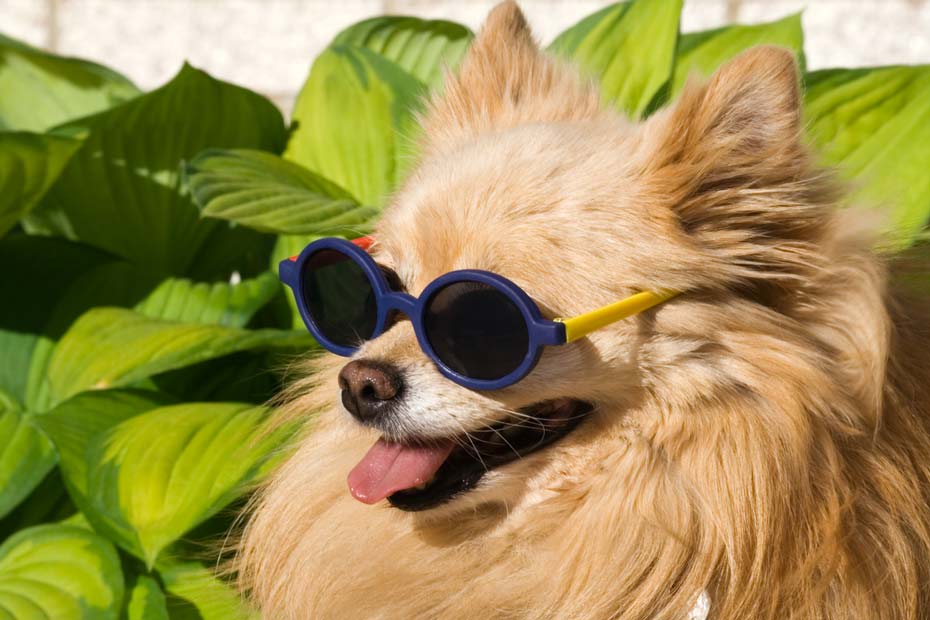Dog Shaving: Helpful or Harmful?

Every year when summer arrives and the days grow longer and hotter, you can't help but notice many people out walking their newly-shaved dogs. You might think that dog shaving is a great idea and can help keep your dog cool. After all, you wouldn't want to go around wearing a fur coat during the summer. However, it is not a good idea to shave your dog for the summer, for the following reasons:
- Dogs' coats are designed to capture air and use it as an insulator. In the winter, this keeps the cold out and holds the heat in. During the summer, this system holds the heat at bay and helps your dog regulate his body temperature. Without this insulating layer of hair, he is susceptible to heat stroke.
-
Dogs do not cool down the same way that humans do.
- When humans are overly warm, our skin perspires and the evaporation of the perspiration helps us to cool down. We have the advantage of perspiring skin over our entire body. In dogs, this evaporative cooling is limited to a very small area—the footpads, which sweat, and the lungs, where panting allows for latent heat to be removed through evaporation. Shaving the coat will have no effect on these areas.
- Dilated (enlarged, expanded) blood vessels in dogs' ears and on their faces carry warm blood closer to the surface of the skin, allowing heat to escape. Again, body shaving will not influence this process.
-
A dog's fur coat protects him from sunburn and decreases his risk of developing skin cancer. Think of a bald human head at the beach in the sun: a light hat allows the occupant to be cooler and his head better-protected from sun damage. Some other ways to help prevent skin cancer in your dog are:
- Keeping him inside when the sun is the brightest during mid-day.
- Using pet-specific sunblock on your dog's nose, ear-tips, and stomach if it is hairless.
- Shaving a double-coated breed can result in improper re-growth. Many large northern dog breeds such as Labradors, Shepherds, Huskies, and Golden retrievers have two hair coats. The inner, down undercoat is insulating and keeps the dog warm in cold weather and cool in hot weather. This layer is shed regularly. The outer coat, or guard hairs, are coarser, fewer, and longer. They give the dog his color and aren't shed as often. If this type of coat is shaved, the undercoat grows back quickly and sheds normally. However, the guard hairs don't grow out as quickly and sometimes can't grow at all because they are crowded out by the faster-growing undercoat. This can result in color and texture changes in your dog's coat, a patchy appearance to the fur, follicle damage and clogging, and the loss of the weather and water protection that guard hairs provide.
How Can You Help Your Dog Stay Cool?
- Provide lots of fresh, cold water.
- Make sure your dog always has shelter from the sun when he is outdoors.
- Don't leave your dog outside in hot weather. Remember that it's easier for you to keep cool than him, so if it's hot for you, it's hotter for him.
-
Tend to your dog's coat with regular brushing. A clean and fluffed coat is his best defense against the heat. Use a tool that helps remove the undercoat that your dog is naturally shedding due to the warmer weather. These are excellent products:
-
Zoom Groom by Kong is an excellent bathing tool. This rubber body brush helps massage your dog's skin, scrubs in the shampoo, and stimulates circulation to the hair follicles. Here is a great video about the Zoom Groom:
- Jorvet T-Shaped Undercoat Rake is a wonderful tool for effectively removing loose undercoat in double-coated dogs.
- Dog Body Brush with Shampoo Applicator is another body brush that also dispenses shampoo.
- Fur-buster De-shedding Tool has stainless steel blades that removes loose undercoat while fluffing the remaining fur and promoting good air circulation.
-
Nature has seen to it that a dog's hair affords him protection from the sun, heat, insects, dirt, and water. Don't undermine the process by shaving him.
You May Also Like These Articles:
Dog Weight Loss: Tips For Helping Your Dog Lose Weight
Obesity in Dogs: Overview of Causes and Dangers
How to Be Prepared for Your Dog's Veterinary Bills
Keeping Your Dog Active While You're Away
Disclaimer: This website is not intended to replace professional consultation, diagnosis, or treatment by a licensed veterinarian. If you require any veterinary related advice, contact your veterinarian promptly. Information at DogHealth.com is exclusively of a general reference nature. Do not disregard veterinary advice or delay treatment as a result of accessing information at this site. Just Answer is an external service not affiliated with DogHealth.com.
Notice: Ask-a-Vet is an affiliated service for those who wish to speak with a veterinary professional about their pet's specific condition. Initially, a bot will ask questions to determine the general nature of your concern. Then, you will be transferred to a human. There is a charge for the service if you choose to connect to a veterinarian. Ask-a-Vet is not manned by the staff or owners of DogHealth.com, and the advice given should not delay or replace a visit to your veterinarian.




